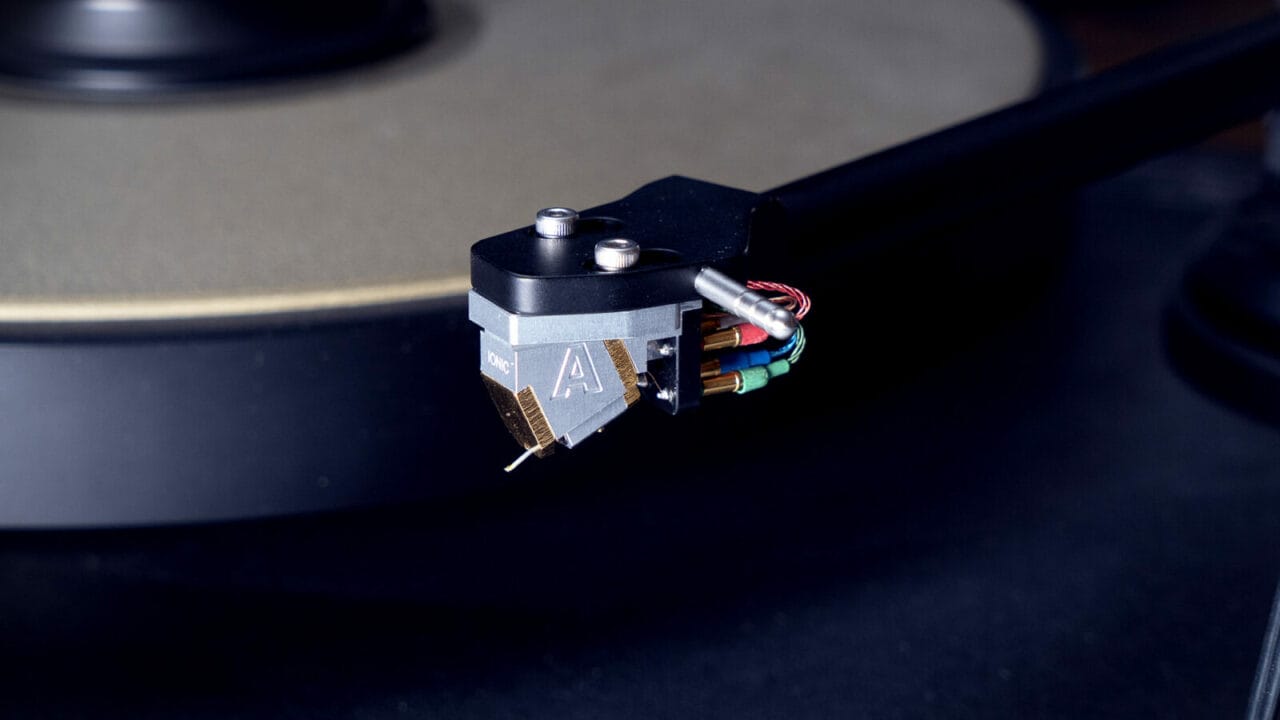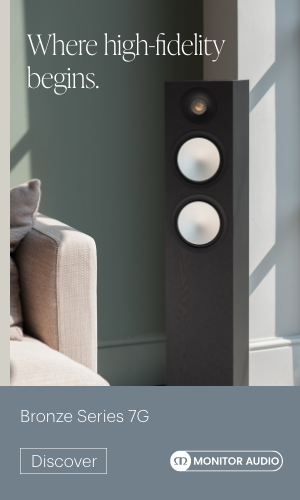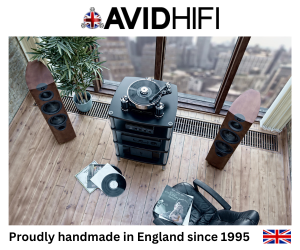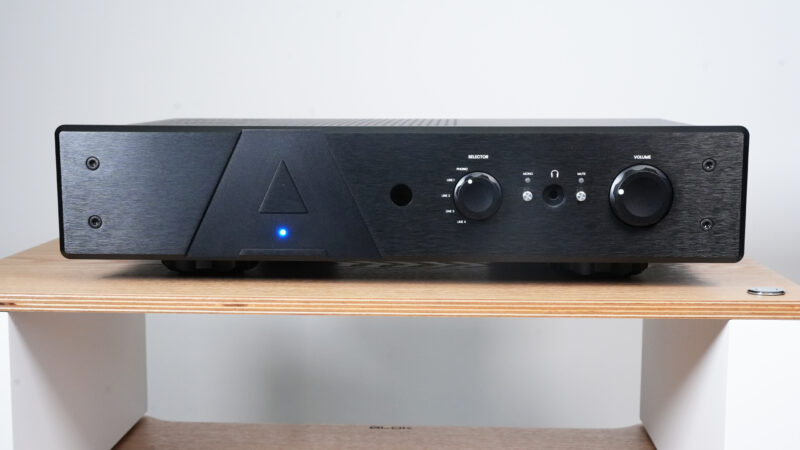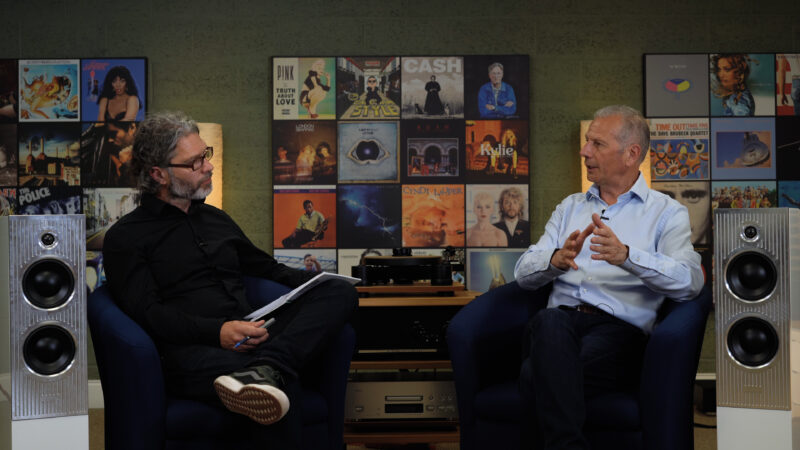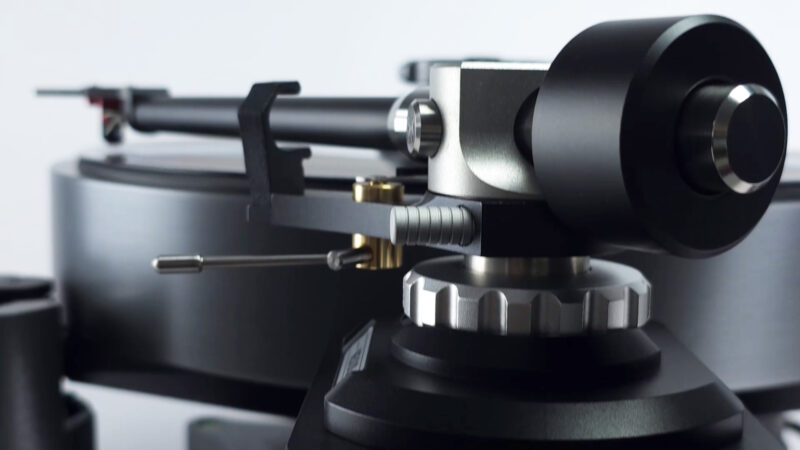Perhaps it’s due to AVID hitting the big three-o this year, as there’s certainly been a spring in its step of late in terms of new products, news and a drive to move forward.
No sooner had we given its superb Nexus tonearm product of the year, it declared a V2 variant with more of its bias compensation tech applied. While many brands would have dined out for a good while on that initial accolade for some time before moving to MKII status, AVID seems keen to get its improvements to customers without delay. And it’s also got an eye on current AVID tonearm owners too, by offering existing Nexus and Altus users a cost effective V2 upgrade option on the original.
And that Nexus tonearm (AVID’s flagship vinyl wand) made such an impression on us last April it’s what has led us here. As it quickly became our reference arm of choice on my SME 20/2 deck, leaving competing arms at the price in its wake (including I might add, those from SME), such is its bold and detailed sound, usability and excellent effective mass characteristics. It’s a hi-end reviewer’s dream.
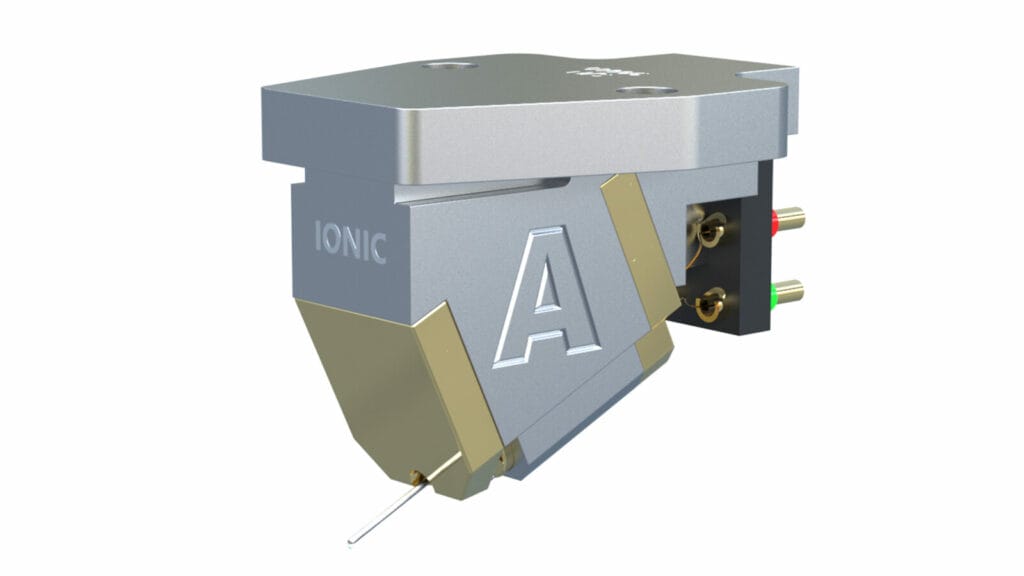
Ionic represents the first rung in AVID’s three strong moving-coil cartridge ladder, sitting below Ruby and Boron models
After taking it to V2 status (an upgrade I can vouch for as well worth doing if you’re a MkI owner) our Nexus has been crying out for a pick-up with equal capabilities. Goldring’s great value Ethos has been our go-to moving-coil in recent times, as the model to beat under £1k. But in a bid to see how far the Nexus V2 can really be pushed when you remove the price barriers the Ionic makes perfect sense, as a cartridge that’s actually designed for the Nexus from AVID’s own stable.
Best of three
AVID only does moving-coil carts (there’s no moving-magnet options) and the Ionic is the cheapest of the trio it offers, sitting under the £6,500 Reference Ruby (with Ruby cantilever) and £4,500 Boron with (you guessed it) Boron cantilever. Nonetheless at £2,500 the Ionic is firmly placed in hi-end analogue territory.
Yet despite the significant price differences, the Ionic, shares the same magnet, coils and body design as its more costly brethren. And while its cantilever may not boast the exotic inherent performance traits of its Ruby and Boron siblings, its 7.6×15.5µm elliptical stylus (shank-mounted through a crimped alloy cantilever) is precision personified.
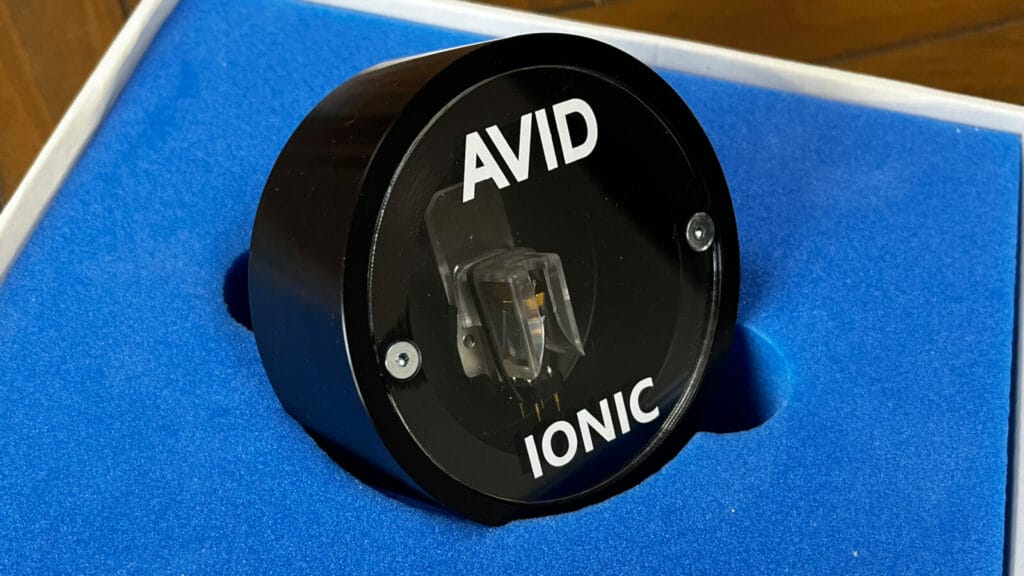
AVID’s engineering credentials shine through even with the packaging, as the Ionic’s thick protective case with bolt down perspex cover could survive some serious postal abuse
Fresh from its top quality case and the Ionic’s aero-grade aluminium body is everything we’ve come to expect from AVID, being refined to a level few hifi engineering firms can match, right down to its embossed ‘A’ and brushed gold plating.
Installation is made easy, partly thanks to its large and purpose made slide-on stylus guard (that is better thought out and easier to use than most in the business), and also because its lines match the Nexus’s headshell, aiding alignment.
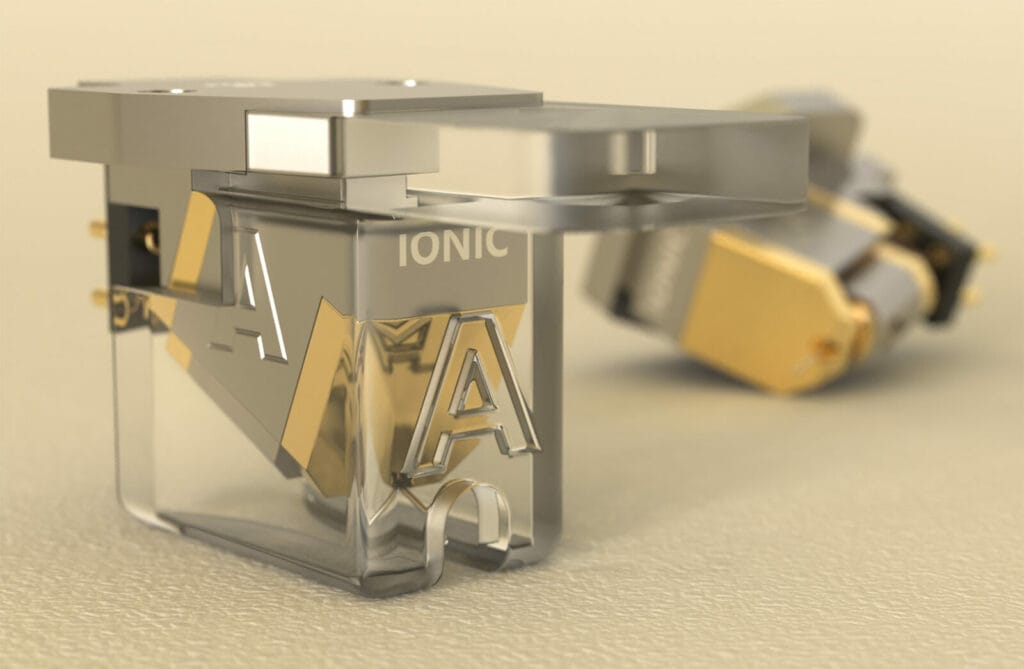
Heavy duty transparent stylus guard slides over the whole cartridge via slots atop the pick-up. Note the elongated finger grip at the front, making it easy to pop on and off
Being part-exposed (albeit not to Sumiko Blue Point Special degrees) reveals its gold-plated magnet yoke, coils, and fine lead out wires, demands a steady hand and cool head (as damaging this puppy will cost you four Sumikos and then some), when fitting although its not too intricate an affair, partly thanks to its pre-drilled mounting holes.
The Ionic’s long cantilever is a bit intimidating at first sight too as its so far out there beyond the cartridge body, but in practical terms it also makes alignment and curing up tracks manually by that bit simpler. Just be sure to reinstall the protective stylus guard when not in use to fully safeguard your investment.
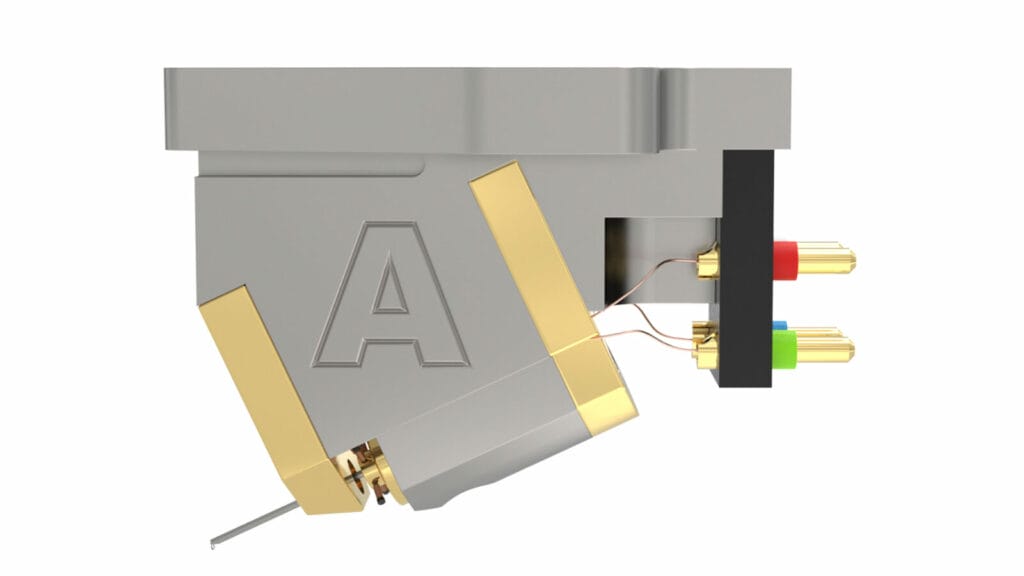
Side-on render shows the Ionic’s exposed cartridge wires. Cartridge pins are colour coded and more tapered than the image above suggests, making push-fitting the tags less tricky than with standard pins
Performance
With the vinyl rig being boosted by a Primare R35 phono stage, feeding Musical Fidelity M6 pre/power amps driving Dynaudio Evoke 50 loudspeakers and Nordost Leif Red Dawn 3 cables throughout, the Ionic is in safe and secure hands.
Despite having heard more hi-end MCs than I can remember, I’m always amazed at the breed’s general ability to really dig deep into the musical detail with a sense of ease. And the Ionic does this more effortlessly than most.
My relationship with REM’s era defining Automatic For The People LP goes way back, being the go-to record of my early hifi buying and then reviewing days. And with the Ionic tracing its grooves it sounds fresher than ever.
The emotion conjuring piano on Nightswimming for example has class-leading note and instrument separation as you may expect with a cart of this caliber, but it’s the texture and drama that really pulls you in to experience the actual performance, right down to how firmly (or not) each key is struck, leading to an arrestingly real sense of attack and sustain as each notes emerges and hangs in the air.
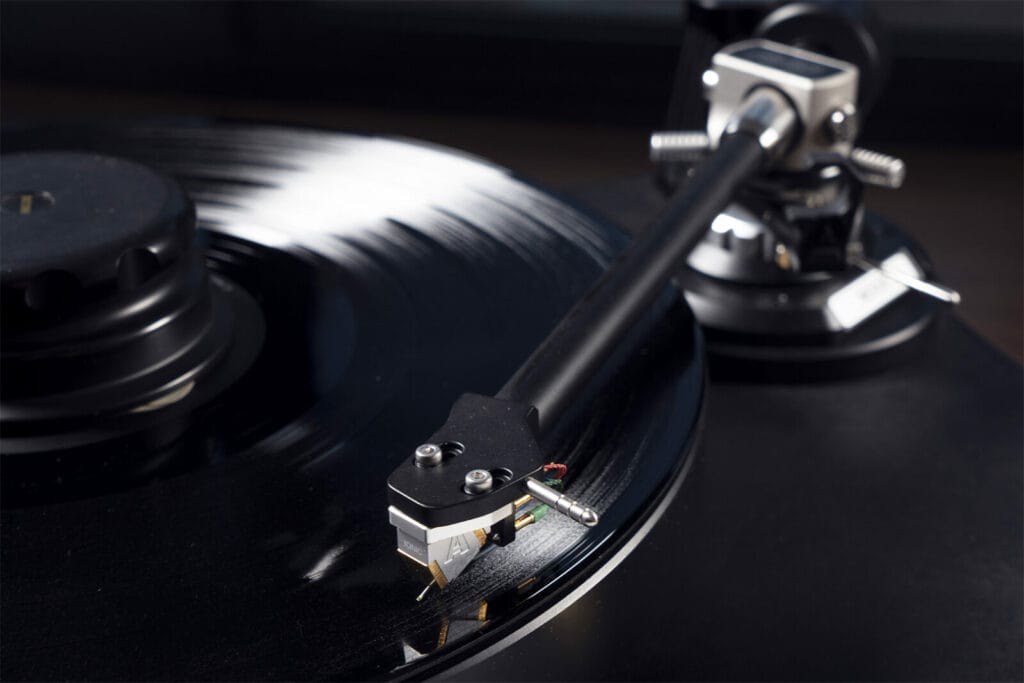
In the groove mounted on an AVID Nexus V2 tonearm, denoted by the twin bias adjusters left and right of the main bearing housing
Shifting the dial to Billie Holiday’s Lady In Satin makes for a mesmerising audio experience. Such is the delivery of her vocals via the Ionic, it’s hard to focus on cold edged hifi analysis, as she simply sounds divine via this arm and cart combo, and this is how hifi should be when your system and music being played collide as they should – resulting in utterly distracting and emotionally rewarding experience.
Timeless melody
Stereo separation is good. Very good in fact and notably better on the Nexus V2 than its MkI predecessor (having heard the Ionic on the Nexus pre and post V2 upgrade). There’s a caveat here though, as AVID invites you to set its adjustable ‘dual bias’ by ear, and you need to take the time to experiment and dial this in accurately to reap its its full benefits of balance and imaging. When right though this album illustrates the cart and arm’s combined attributes beautifully, thanks to its clear cut imaging across strings and instruments. Aligned to this accuracy which is all well and good is a lovely sense of melody too that allows the music to flow at its own seemingly natural pace, and this is what really brings the performance to life.
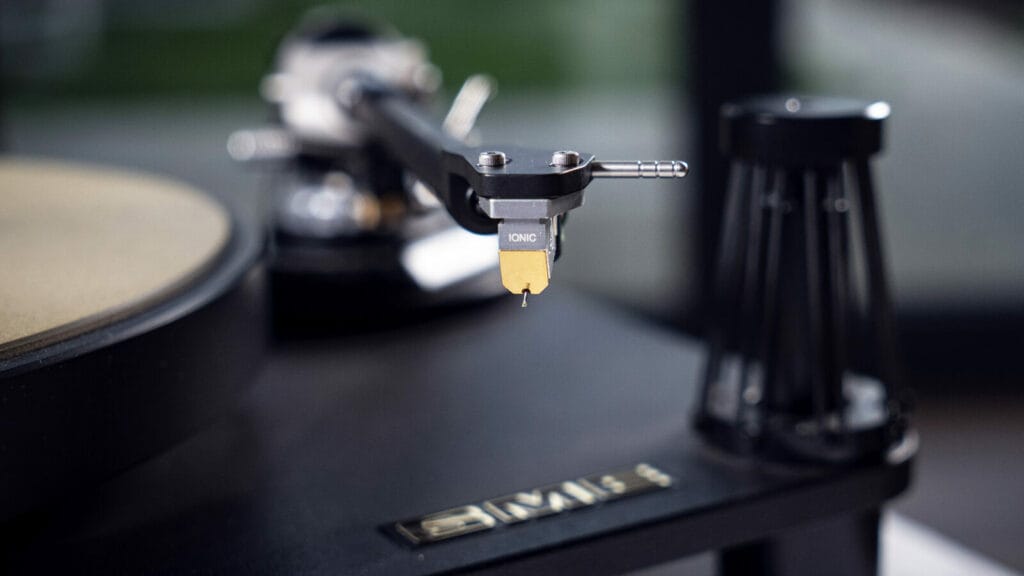
Where two vinyl rivals collide, AVID cart and arm looking right at home on my SME 20/2 turntable
Changing gears via the Stone Roses’ Second Coming album shows it to be no slouch either. Begging You is a track that will get many a cartridge cantilever quivering in its suspension shoes and its mix will quickly expose a poorly put together pick-up in seconds, resulting in the music descending into chaos. But like a hard-boiled Sargent Major at a boot camp, the Ionic is fully in control.
That frenzied percussion sounds in full force via the AVID, with no sense of it being held back or struggling to keep up, while the guitars and vocals aren’t sidelined in anyway as a result, meaning you’re presenting with a wall of sound in the true meaning of the phrase (reinforced also by the Ionic’s generous soundstage proportions). To coin an overused phrase – this cartridge really can do it all…and then some.
In summary
Given AVID’s engineering pedigree and price tag of the Ionic, it’s perhaps no surprise that this is an exceptionally well put together bit of hi-end kit. But it’s not just in its built quality where it shines, as it also sounds exceptional and well worthy of its price tag. Many MCs excel at this price point, but often in certain directions or with certain musical genres. The Ionic however is less fussy and stands out as a true do-it-all hi-end cartridge with a musicality that’s the icing on its cake.



